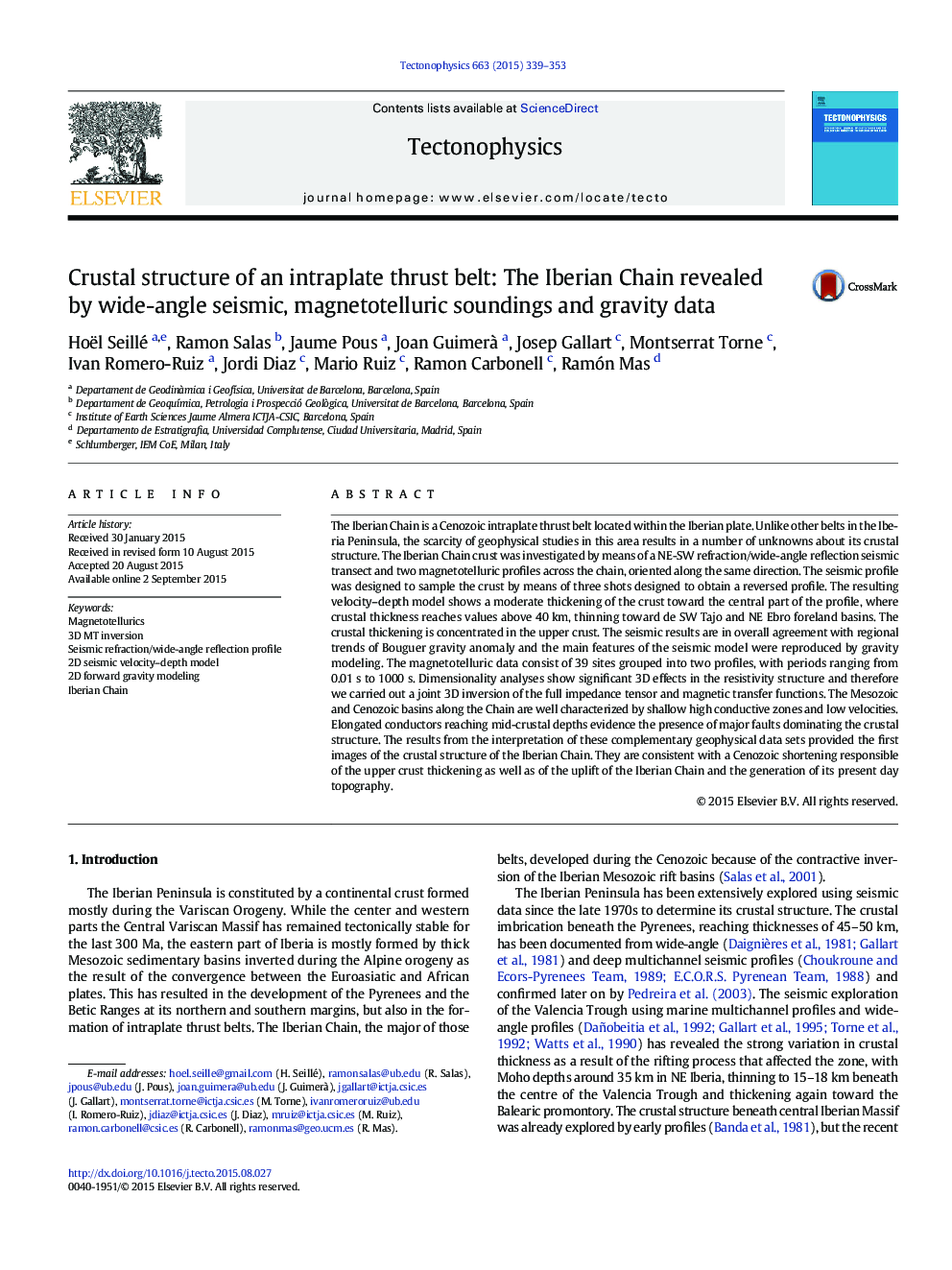| Article ID | Journal | Published Year | Pages | File Type |
|---|---|---|---|---|
| 6433558 | Tectonophysics | 2015 | 15 Pages |
â¢Crustal structure of the Iberian Chain inferred from seismic, magnetotellurics, and gravity dataâ¢First electrical conductivity model of the Iberian chainâ¢Thickened crust revealed by a wide-angle seismic profileâ¢Cenozoic shortening responsible of the upper crust thickening
The Iberian Chain is a Cenozoic intraplate thrust belt located within the Iberian plate. Unlike other belts in the Iberia Peninsula, the scarcity of geophysical studies in this area results in a number of unknowns about its crustal structure. The Iberian Chain crust was investigated by means of a NE-SW refraction/wide-angle reflection seismic transect and two magnetotelluric profiles across the chain, oriented along the same direction. The seismic profile was designed to sample the crust by means of three shots designed to obtain a reversed profile. The resulting velocity-depth model shows a moderate thickening of the crust toward the central part of the profile, where crustal thickness reaches values above 40Â km, thinning toward de SW Tajo and NE Ebro foreland basins. The crustal thickening is concentrated in the upper crust. The seismic results are in overall agreement with regional trends of Bouguer gravity anomaly and the main features of the seismic model were reproduced by gravity modeling. The magnetotelluric data consist of 39 sites grouped into two profiles, with periods ranging from 0.01Â s to 1000Â s. Dimensionality analyses show significant 3D effects in the resistivity structure and therefore we carried out a joint 3D inversion of the full impedance tensor and magnetic transfer functions. The Mesozoic and Cenozoic basins along the Chain are well characterized by shallow high conductive zones and low velocities. Elongated conductors reaching mid-crustal depths evidence the presence of major faults dominating the crustal structure. The results from the interpretation of these complementary geophysical data sets provided the first images of the crustal structure of the Iberian Chain. They are consistent with a Cenozoic shortening responsible of the upper crust thickening as well as of the uplift of the Iberian Chain and the generation of its present day topography.
